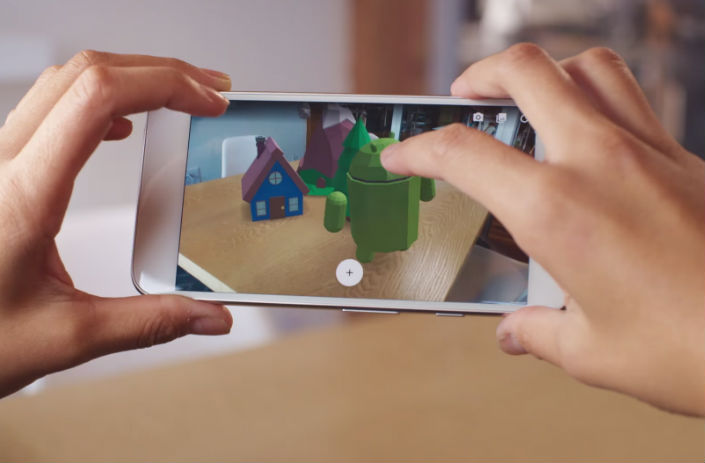It’s only been a few months since Apple released ARKit, but Google’s ready to respond to it with its newest AR platform: ARCore.
ARCore is Google’s new approach to its Tango software, released in 2014. Unlike Tango, which is hardware dependent and needs a specific phone to work, ARCore doesn’t need anything extra and should work with 100 million existing and upcoming devices by this winter.
Google’s take on the ARKit
A couple of months ago, we discussed how convenient Apple’s ARKit is compared to Google’s Tango software. In such a short time after its release, Apple’s software proved how successful it was through different user-developed demos. Along these lines, it’s no surprise Google decided to take a “step back” from Tango, and focus on something less powerful but more accessible, such as ARCore.
This is an important move for the industry, but not just because the “rivalry” between Apple and Google might push both and other companies to develop better technologies. This also means the number of people that have access to AR increases by a great amount, as Android, the most popular smartphone OS around the world, gets to experiment with it.
Clay Bavor, Google’s AR/VR department leader, told TechCrunch that the “goal with Tango was really to prove out the core technology and show the world that it’s possible”, and “to drive that capability into as many devices as possible.”
The technology behind ARCore
Google’s new platform uses motion tracking to estimate the phone’s relative location based on internal sensors and video footage, allowing you to pin objects in one place and walk around them. It also uses environmental understanding to detect flat surfaces through the phone’s camera, and light estimation to accurately cast shadows and fit objects in their surroundings.
Just like Apple’s platform, ARCore uses Java/OpenGL, Unity, and Unreal. Furthermore, Google’s Tilt Brush and Blocks creations are exportable to ARCore as well. Google is also releasing two experimental, AR-focused builds of Chromium: an Android-based web browser using ARCore, and an iOS-based one based on Apple’s ARKit.
As of now, ARCore supports Android 7.0 Nougat as well as 8.0 Oreo, and a developer preview is available for the Google Pixel and Samsung Galaxy S8 phones.






